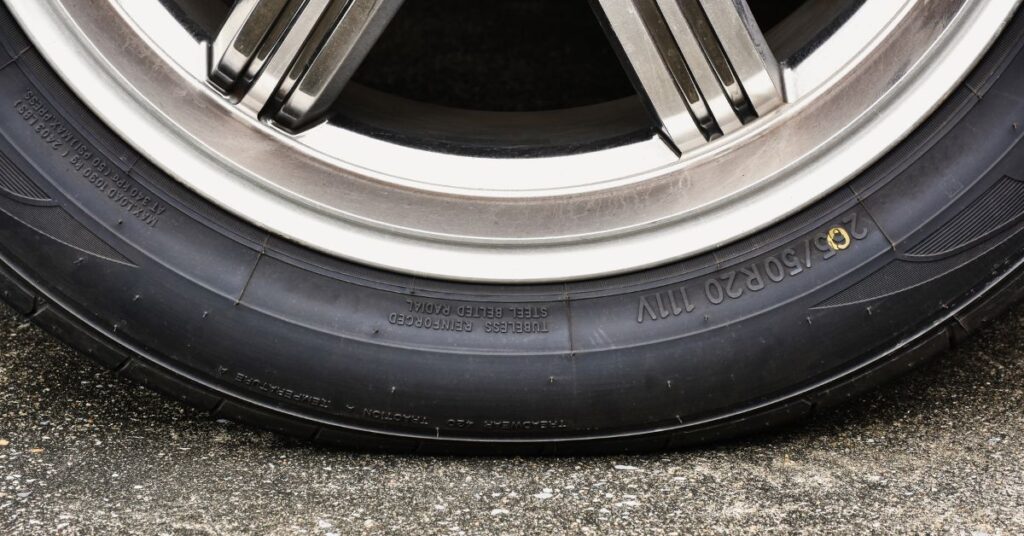
Table of Contents
Tires play a crucial role in maintaining a vehicle’s safety and performance. It’s essential to ensure they are in optimal condition to maximize road safety and fuel efficiency. However, punctures and damages are a part of any tire’s lifespan. One question that often comes up is, “Can you patch the sidewall of a tire?” The simple answer is no, you should not, but let’s discuss the details.
External Anatomy of a Tire
Tires have come a long way in design and functionality, with technology advancements ensuring longer life and optimal performance. However, the anatomy of a tire hasn’t changed all that much. When examining a tire’s exterior, it’s easy to recognize two major parts: the tread and the sidewall.
Tread
This part of the tire comes into direct contact with the road. The intricate patterns on the tread serve specific purposes. They channel water away in wet conditions, provide grip in various terrains, and contribute to the car’s fuel efficiency and noise reduction. The depth of the tread also plays a crucial role in determining when a tire needs replacing. Tires with low tread depth can reduce traction, especially in wet conditions, leading to longer stopping distances and potentially hydroplaning.
Sidewall
The sidewall is the section of the tire that runs from the tread to the wheel rim. You may see crucial information on the sidewall, including the tire’s size, type, load-carrying capacity, and speed rating.
Beyond just providing data, the sidewall is vital for performance. It absorbs road shocks to offer a smoother ride and plays a pivotal role in handling and cornering. Made of rubber and fabric, the sidewall is flexible, allowing the tire to bear the vehicle’s weight while maintaining its shape. When cracks or punctures appear on the tire’s sidewall, they pose a significant safety risk due to the high stresses this part of the tire experiences.
Fixing Tire Sidewall Damage
While patching a tire’s sidewall might be technically feasible, doing so is neither safe nor recommended. The sidewall endures significant pressure, especially when the vehicle is in motion. Patching this area can compromise its structural integrity, increasing the risk of a blowout or failure. Due to this, if a tire’s sidewall is damaged, it typically implies that the tire needs to be replaced.
What Holes Can Be Patched?
While the sidewall remains a no-repair zone, other parts of the tire, especially the tread, can be fixed under specific conditions. Punctures up to ¼ inch in diameter within the central tread can generally be patched. However, larger holes or those closer to the edge of the tread and on the sidewall are often unable to be repaired.
Tire Repair & Replacement in Sandy Springs, Georgia
If you’re facing any uncertainties about the condition of your tires, it’s best to seek professional help. Whether you suspect a puncture, notice sidewall damage, or merely wish for a routine tire checkup, the ASE-certified technicians at McCullough NAPA Auto Care are at your service. Ensuring your safety on the road is our top priority. So, don’t hesitate to contact us for any tire-related concerns and get back on the road confidently.
FAQ About Tire Sidewall Damage
It is not advisable to drive on a tire with sidewall damage. Sidewall damage compromises the structural integrity of the tire, increasing the risk of a blowout or sudden tire failure, especially at high speeds. If you notice sidewall damage, it’s best to replace the tire as soon as possible for your safety and the safety of others on the road.
No amount of tire sidewall damage is considered “ok” or safe. Even minor damage can weaken the tire and make it susceptible to blowouts. If there’s visible damage to the sidewall, such as cuts, punctures, bulges, or cracks, the tire should be inspected by a professional and likely replaced.
It depends on the specific warranty and the cause of the damage. Some tire warranties may cover sidewall damage if it’s due to a manufacturing defect. However, most warranties will not cover sidewall damage caused by external factors like road hazards, punctures, accidents, or improper inflation. Always review the terms and conditions of your tire warranty to determine the coverage.
A bulge in the tire sidewall is an indication that the internal structure of the tire has been damaged, often due to an impact, like hitting a pothole. This type of damage cannot be repaired. Driving on a tire with a sidewall bulge is dangerous, as it can lead to a sudden blowout. If you notice a bulge in the sidewall of your tire, it should be replaced immediately.

